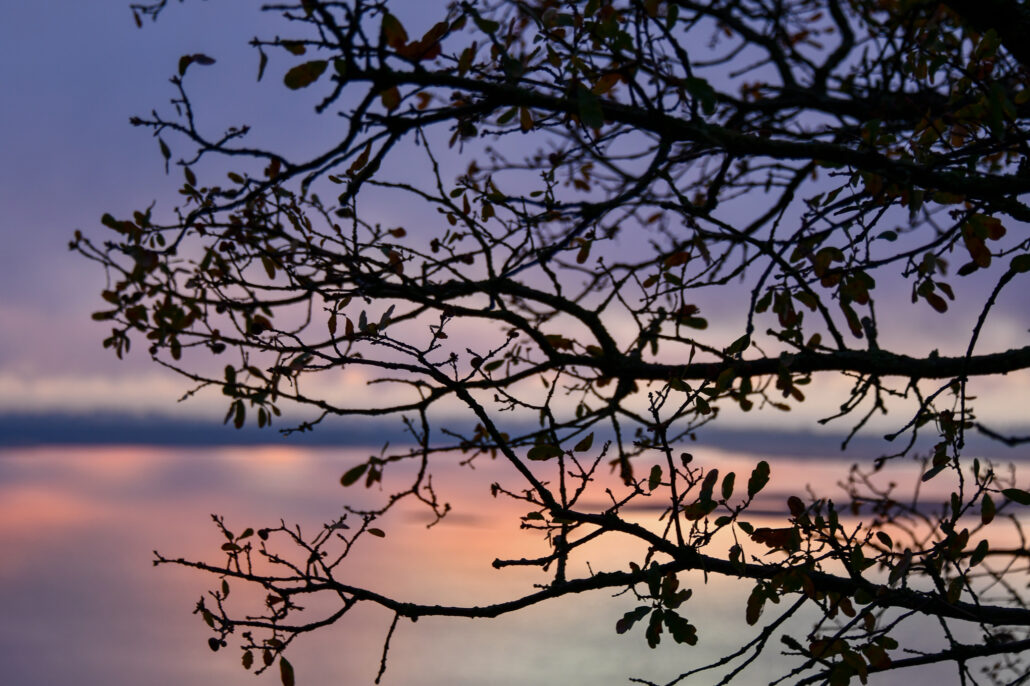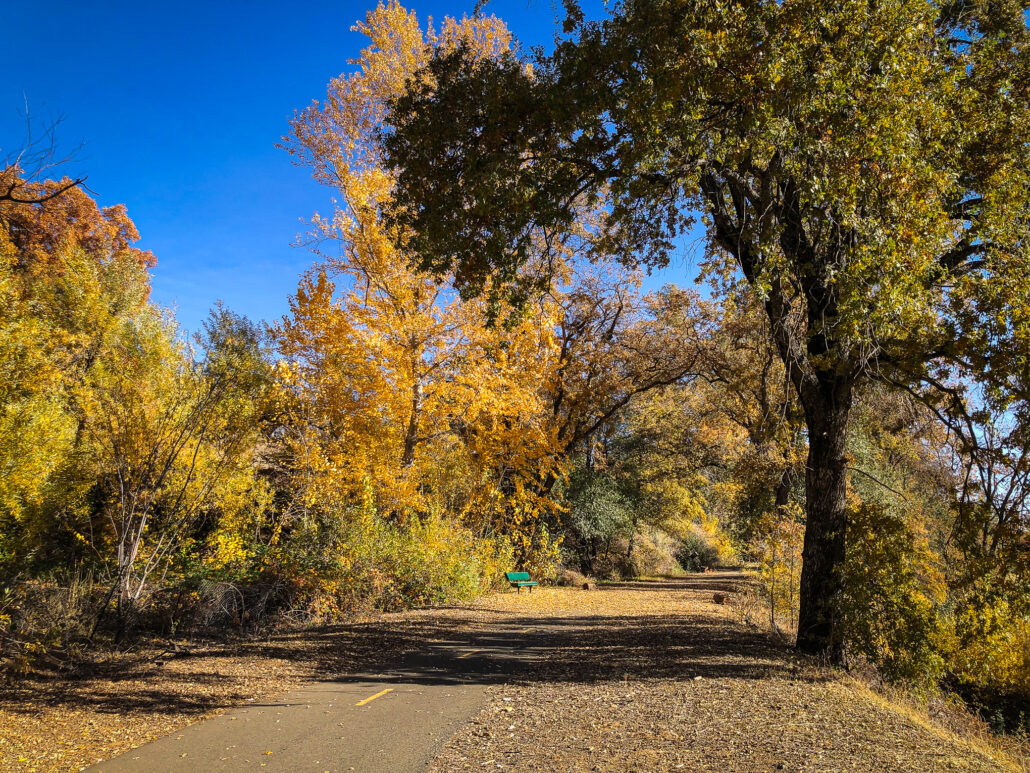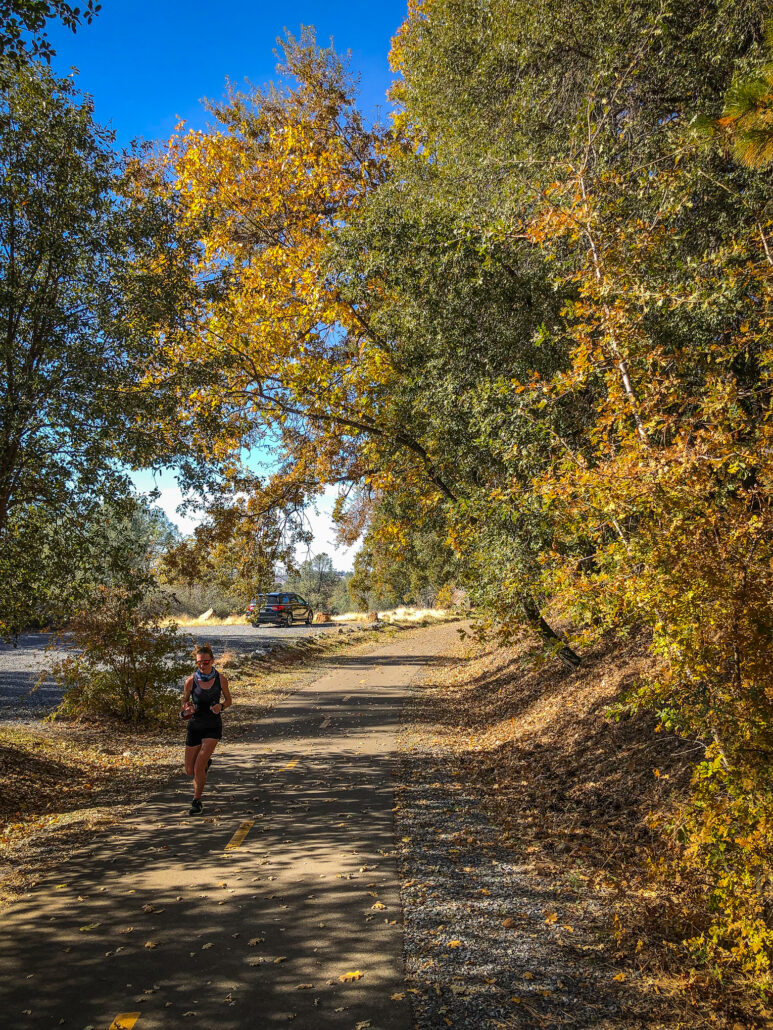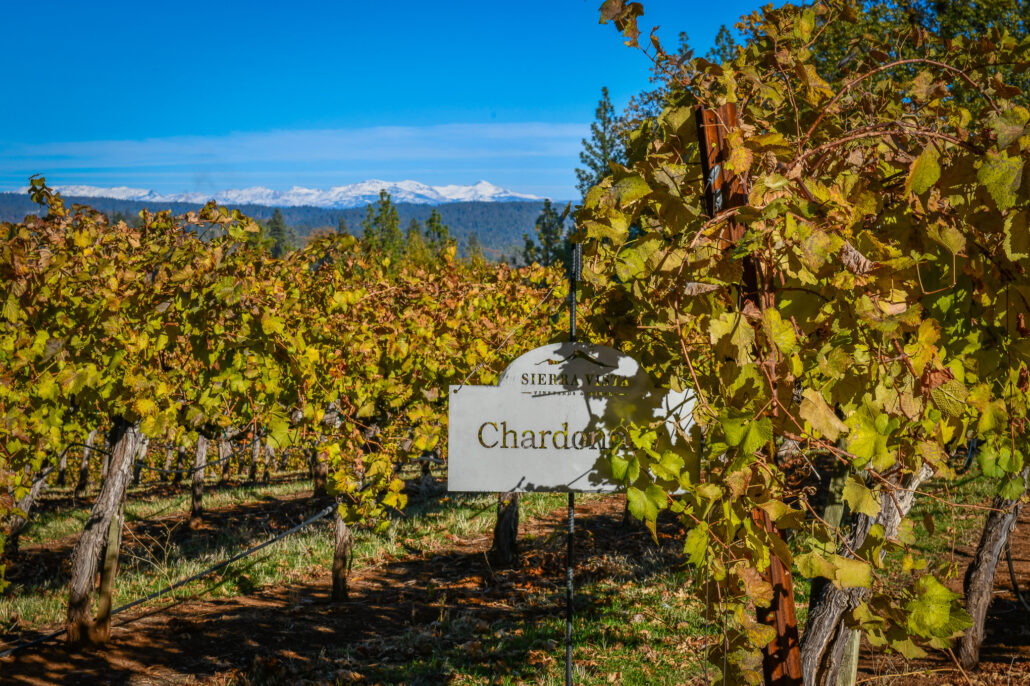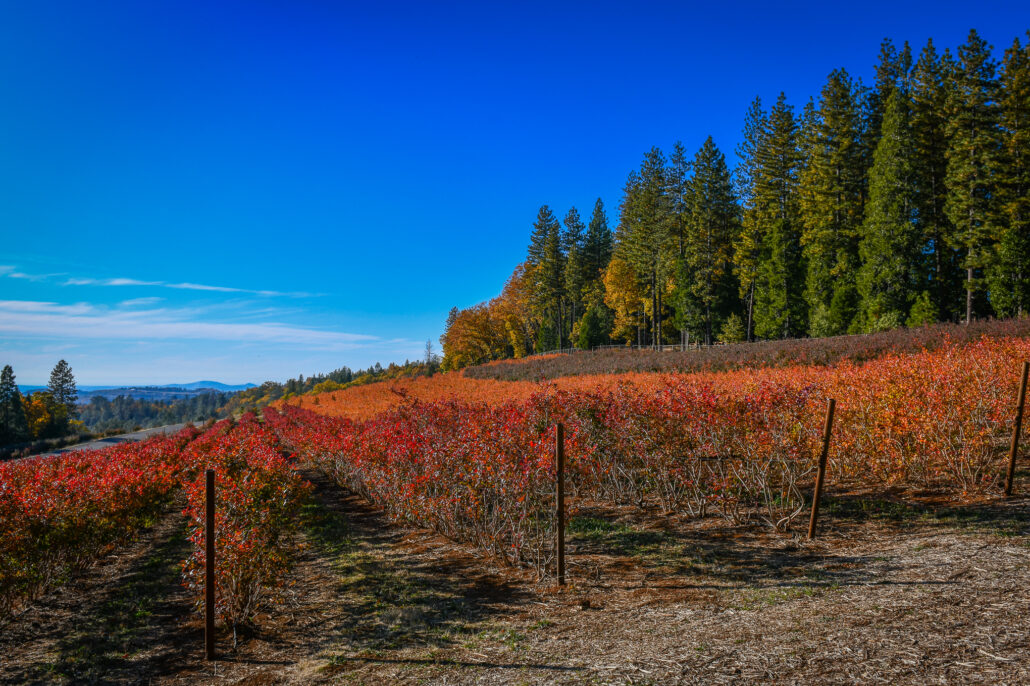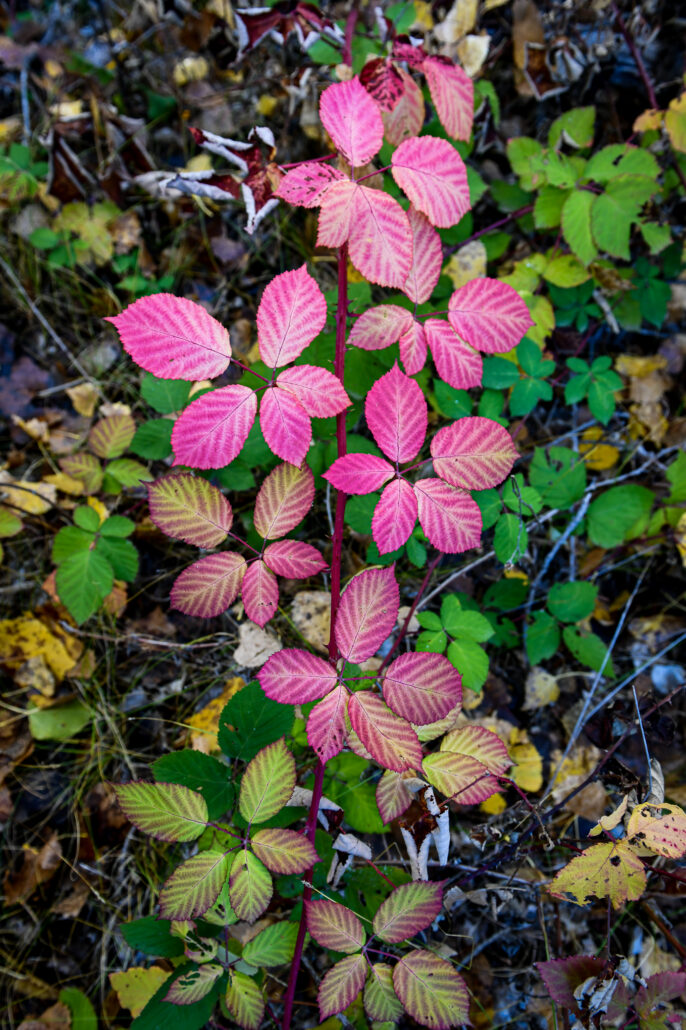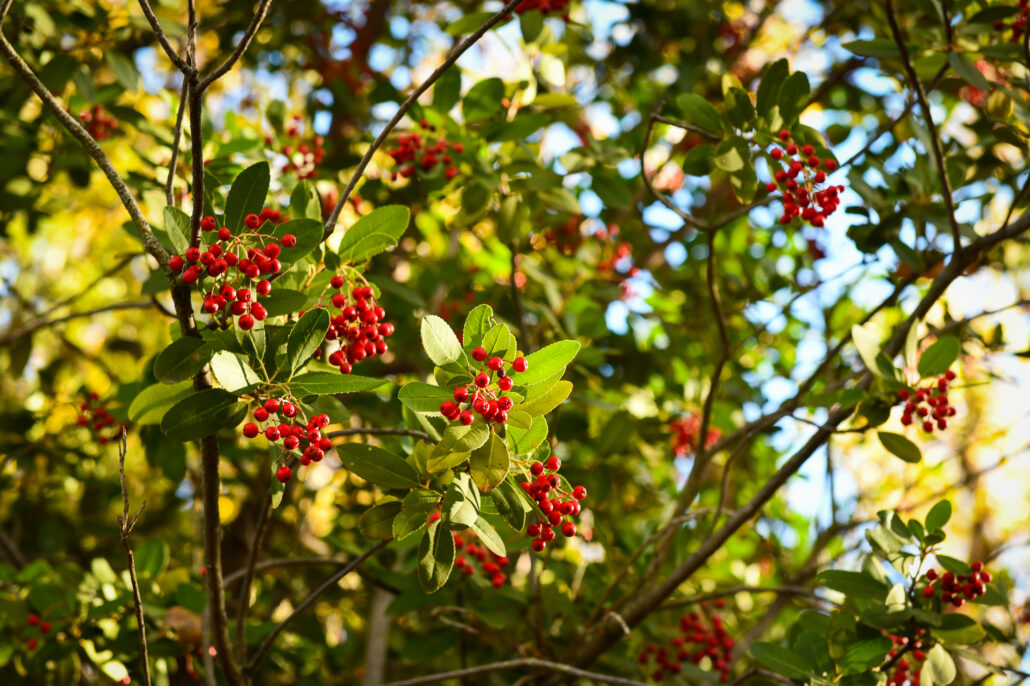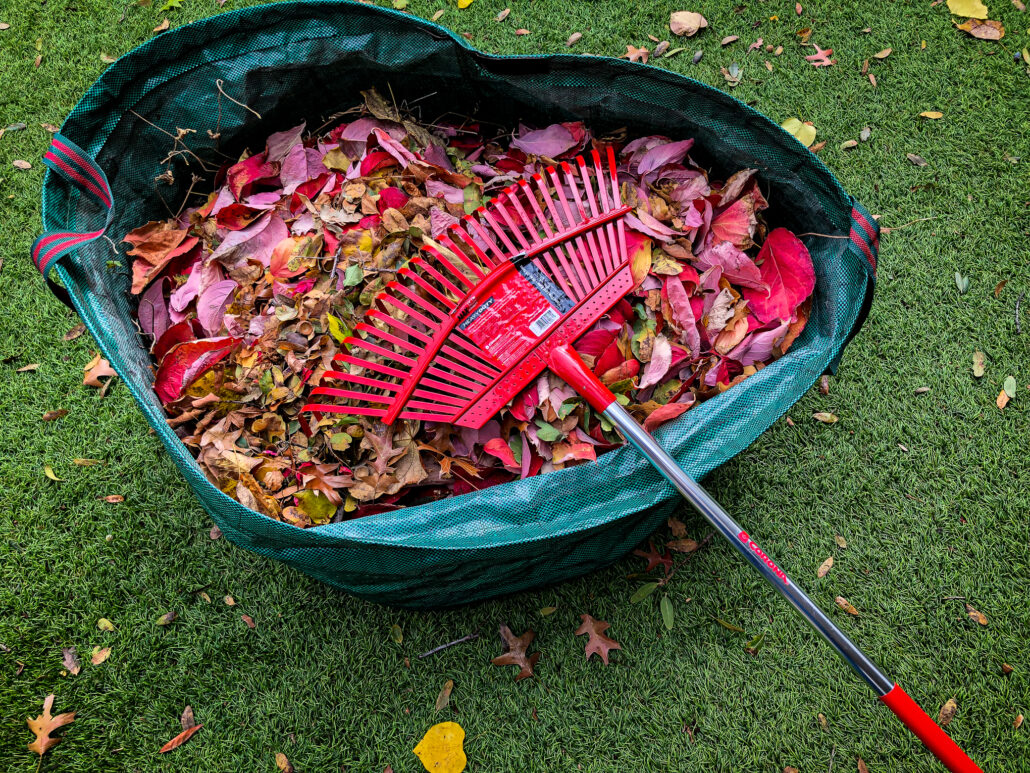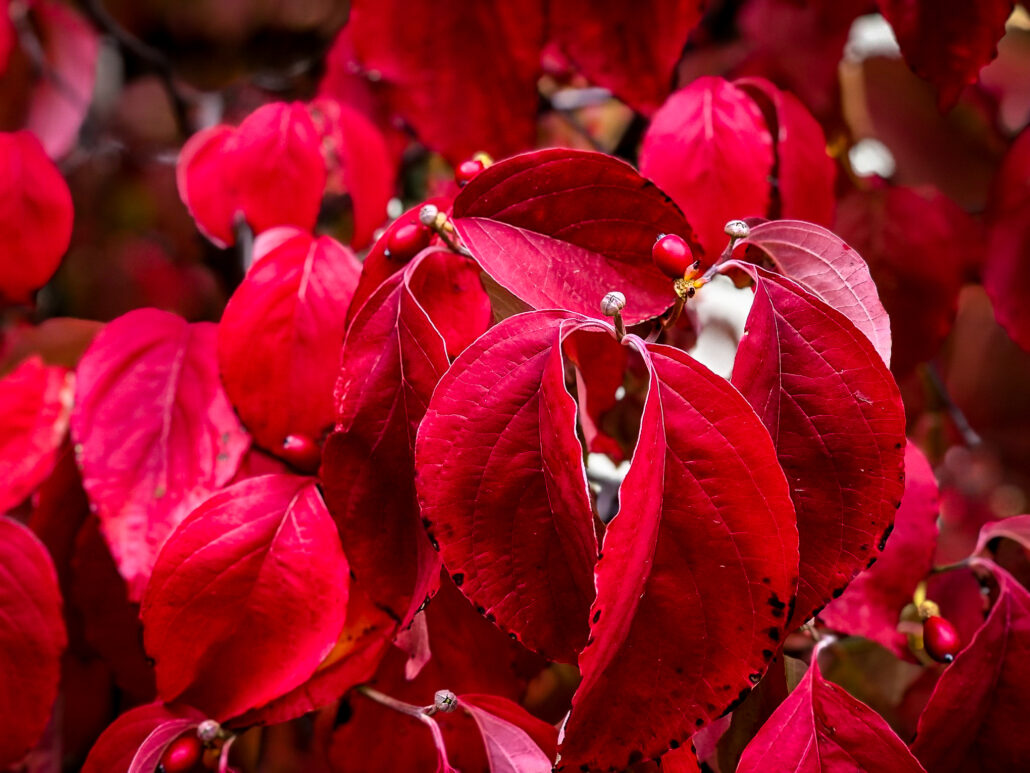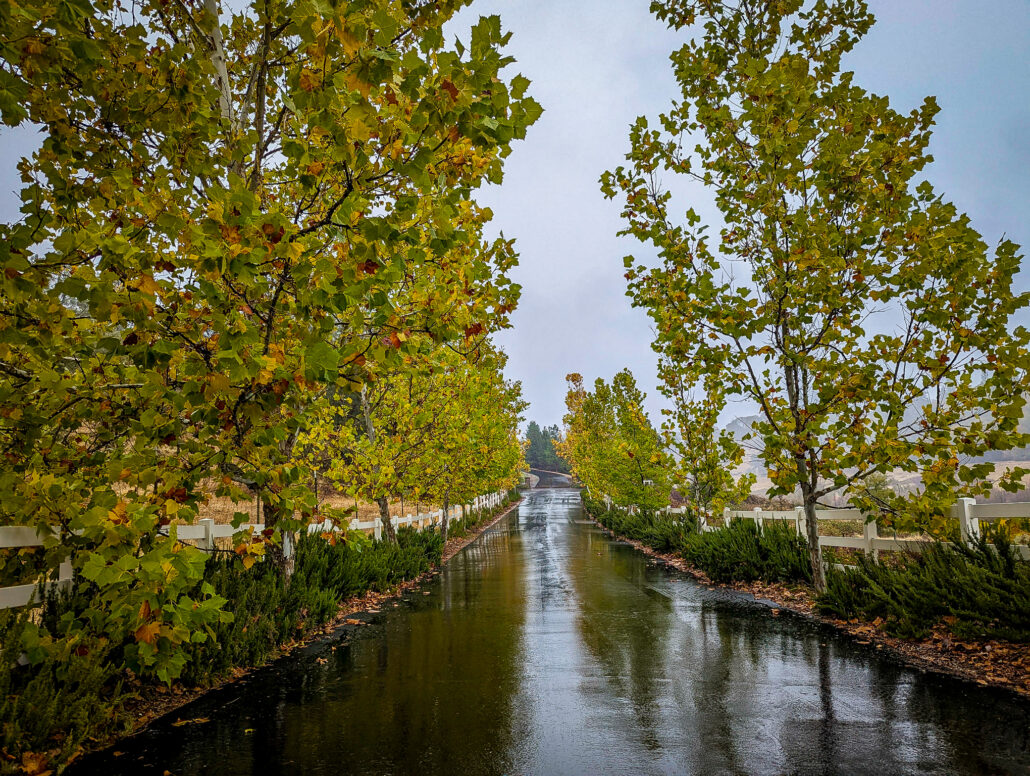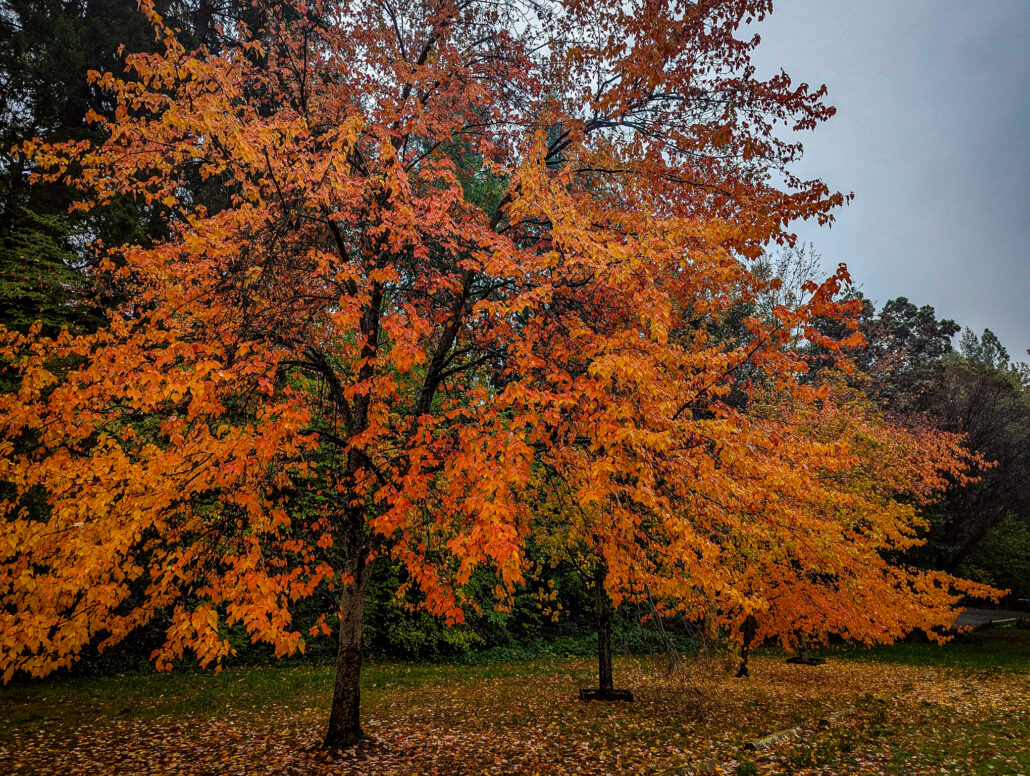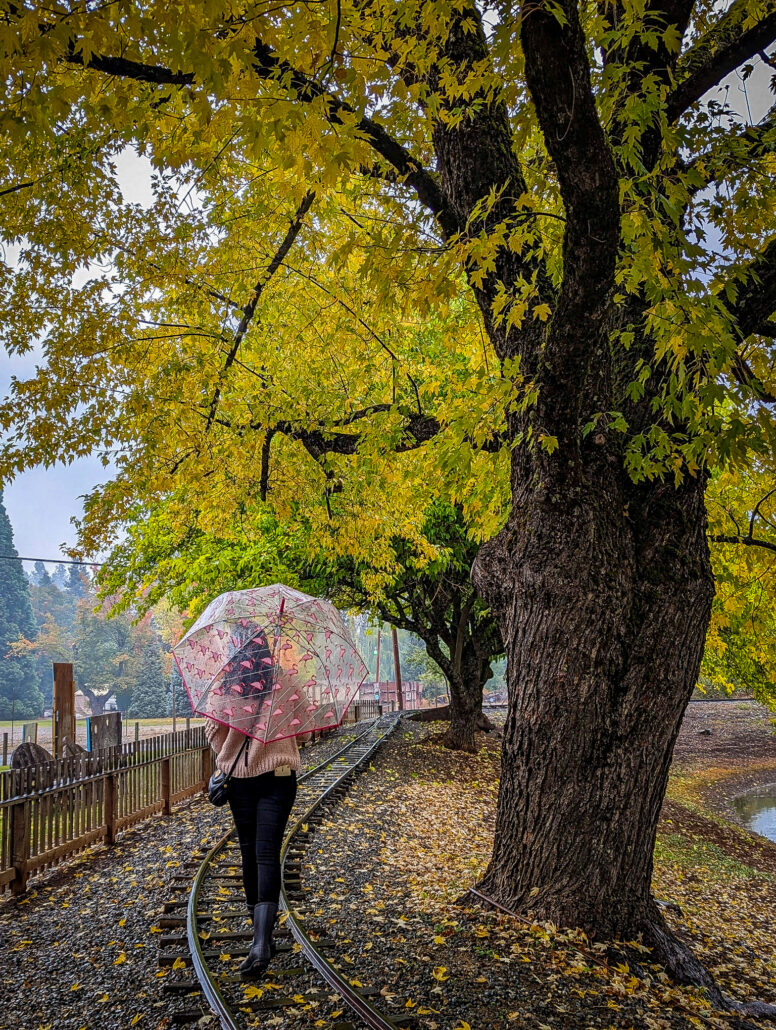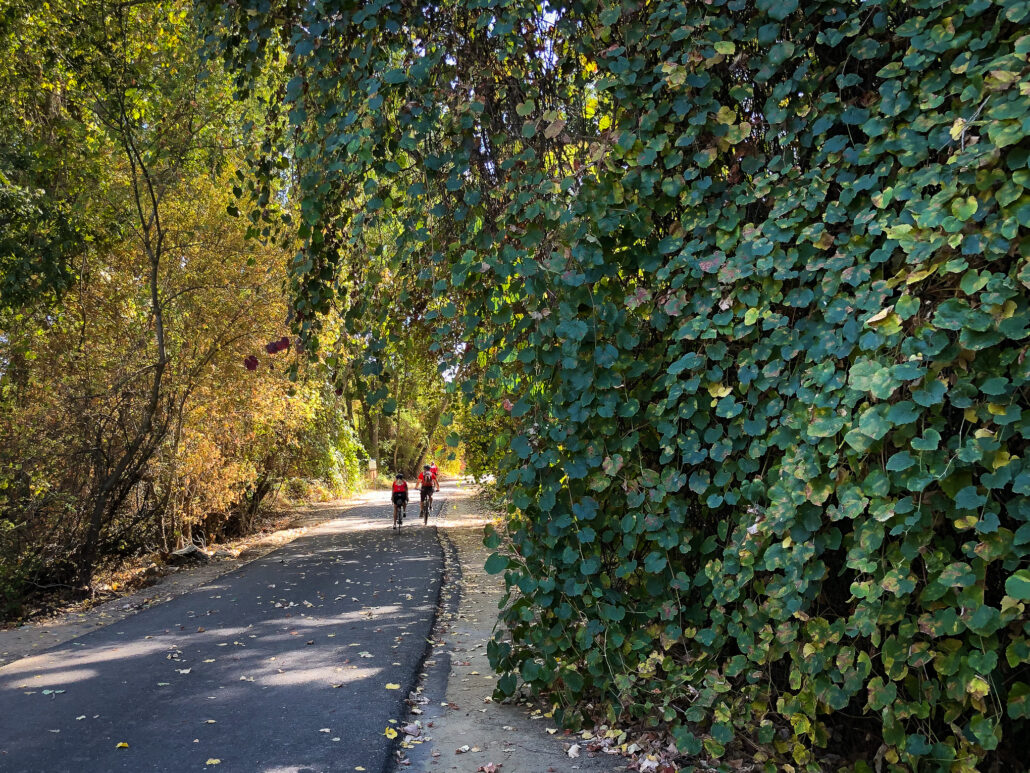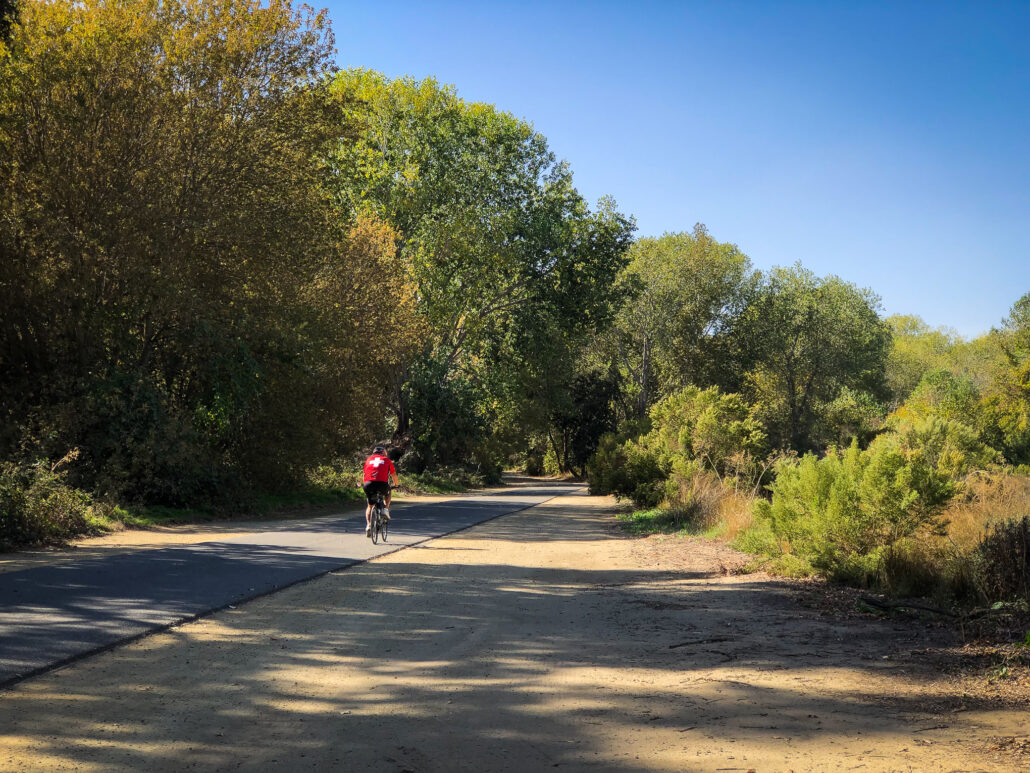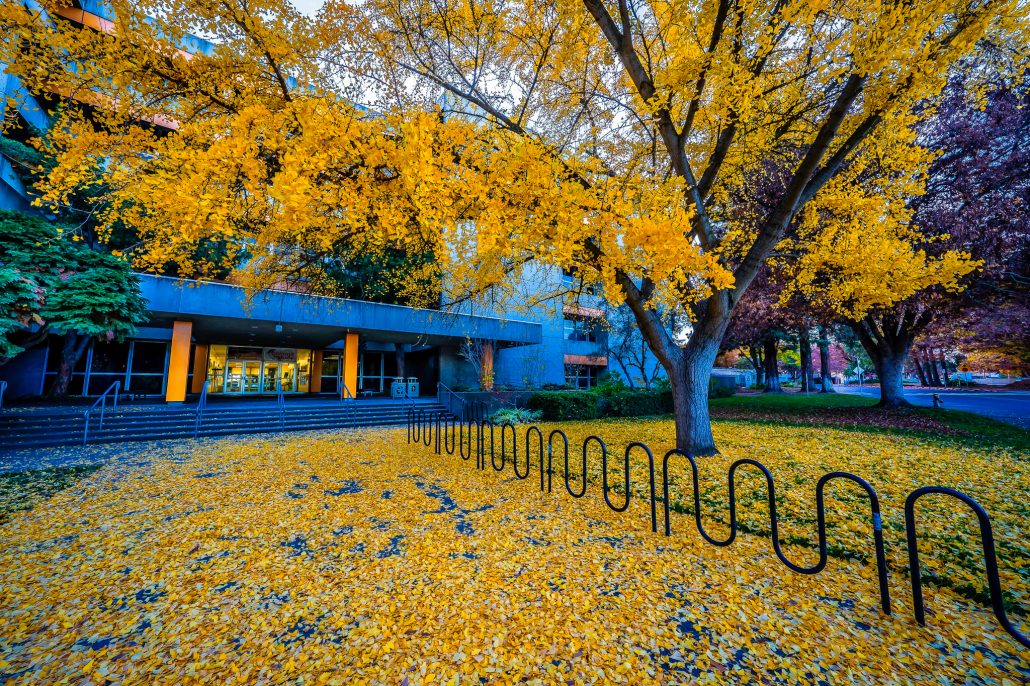Ambassador Park
Between miles 18 and 19 on the American River Parkway is Ambassador Park, a compact riparian woodland containing Black oak, Oregon ash, Black walnut, Valley oak, Fremont cottonwood, California grape, California blackberry, Western sycamore, Box elder, California buckeye and Black elderberry.
Few of the cyclists, walkers or runners passing through this section are aware of the rich diversity of the woodland’s flora. They only know that it’s beautiful.
I spent Orange Friday cycling the Amertican River Parkway and peak is passing in the Gold Country, its cities and beside its rivers, though there is still a golden tone to the parkway, as seen above and in the following botanical images.
- American River Parkway (89′) – PEAK to Past Peak, GO NOW, You almost missed it.
El Dorado Trail
The El Dorado Trail is one of two great multi-use trails in the greater Sacramento region. It, and the Jedediah Smith Memorial Trail on the American River Parkway serve over eight million recreational users, annually.
On Thanksgiving Day, both trails will be busy with walkers, runners, cyclists and skaters along their 69 miles of paved Class I and dirt track. Presently the trails are Peak to Past Peak, with black oak, bigleaf maple and (along the river) Frémont cottonwood and California walnut carrying peak orange, yellow and gold leaves. An occasional bush provides an intense flash of vermillion.
The El Dorado Trail travels 37 miles along an old railroad route from Folsom east to Camino, passing through historic downtown Placerville. Approximately 13 miles of the route is paved Class I bike path (El Dorado to Camino). The rest is unimproved dirt path.
Points of Interest along the El Dorado Trail, include the Gold Rush town of El Dorado, bucolic ranches, a tourist railroad, cat hill – populated by dozens of feral felines, the Weber Creek Bridge on which lovers attach locks engraved with their initials, historic downtown Placerville, an old railroad tunnel, bicycle overcrossing of US 50 and a six-mile climb up a 6% grade.
The Jedediah Smith Memorial Trail parallels the American River for 32 miles on Class I paved bike path from Old Sacramento east to Folsom Lake State Recreation Area. Additional hiking trails are available. Its points of interest include Old Sacramento, American River riparian habitats, a path trod by trapper/explorer Jedediah Smith, views of river rafters, the Nimbus Fish Hatchery, the Lake Natoma Loop, historic downtown Folsom, the Johnny Cash Art Trail, Folsom Dam and Folsom Lake.
Due to their exceptional recreational experience and fall color, the El Dorado and Jedidiah Smith Memorial trails are declared Thanksgiving Week’s California Fall Color Bike/Hike of the Week.
- El Dorado Trail (2,000′) – PEAK to Past Peak, GO NOW, You almost missed it.
- Jedediah Smith Memorial Trail (200′) – PEAK to Past Peak, GO NOW, You almost missed it.
Sunday Drive
It had been some time since we’d taken a Sunday Drive. So, today we drove U.S. 50 through Placerville to Pleasant Valley to pick up a long-ignored wine club order. That allowed us to get close to fall color in the Sierra foothills.
Peak fall color is now down to sea level. Though, I can’t recall when it has endured this long, despite recent rain and snow in the Sierra. On this Sunday Drive, peak fall color was seen up to 3,000′.
Foothill vineyards vary from Patchy to Past Peak by grape variety. Chardonnay vines were carrying chartreuse to tawny leaves. Counoise were splotched with crimson, titian and amber
The foothills were rusted in places with orange and philamont-toned Black oak woodlands. Their muted color seemed to be assailed by invading evergreens.
As we returned by way of Snows Road through Camino, we passed a chestnut, orange and scarlet-banded field of blueberry bushes at Camino Ridge, a U-Pick farm along the Apple Hill Farm Trail. The bushes were picked clean of their berries, a sign that harvest had ended.
Indeed, this was the last “harvest” weekend at Apple Hill. Though the bins were still full of every type of apple imaginable, the pumpkin patch was gone and cars were being loaded with freshly cut Christmas trees for the Sunday Drive home.
- Sierra Foothills (2,000′) – PEAK (75-100%) GO NOW!
Into The Bramble
Into the bramble I trod today, just to find fall color.
I emerged scratching my head after visiting Mormon Island Wetlands SP in Folsom. There were the usual and expected culprits: Frémont cottonwood, California grape, blue oak and valley oak, even a California toyon, all at peak. But I also found a few plants I couldn’t identify, even after returning to pore over reference books.
A needled vine (seen above) was the most dramatic. It spread in low mounds throughout the area (below left) and its leaves resembled those of the Virginia creeper. My first impression was that it was California blackberry (Rosaceae) though I knew that blackberry have 3-lobed leaves, ordinarily. Then I reviewed Eva Begley’s Plants of Northern California to confirm that some California blackberry occasionally have five lobes or leaves.
California blackberry is a nettlesome thing with a bed of needles beneath each leaf that is surely meant to discourage deer from dining on them. They also have the distinction of bearing both male and female flowers, often on different plants. Berries would have settled the question, though they fell, were eaten or picked long ago.
An additional mystery was the forest-green shrub seen above. It was profusely ornamented with white blooms whose petals burst out like tiny feather dusters.
Salil Bhatt provided its identity a week after this article was first posted. It is Coyote Brush (Asteraceae), a member of the sunflower family. For coming to my rescue, Salil earns Fall Color creds, and I have reminded myself, once again, how little I know of California flora.
- El Dorado Hills (768′) – PEAK (75-100%) GO NOW!
- Mormon Island Wetlands SP (377′) – PEAK (75-100%) GO NOW!
- Folsom (220′) – PEAK (75-100%) GO NOW!
- American River (89′) – PEAK (75-100%) GO NOW!
Rainy Day Road Trip
Any other weekend day in autumn but a rainy one, Apple Hill in Camino would be packed with visitors.
Vishal and Seema Mishra visited Saturday and noted that “the rain definitely added to the colors and made the drive enchanting. It was a wonderful trip overall, with a lively atmosphere at the orchards with folks enjoying apple cider and donuts, perfect fall trip! We grabbed many goodies from the orchards, which was a bonus.”
They reported some fall color as “popping out,” though his pictures show mostly Patchy color at this popular harvest festival farm trail.
- Apple Hill, Camino (3,133′) – Patchy (10-50%)
Gold Country
Autumn sunsets in the Gold Country are golden.
I was updating the Fall Color Map when I heard the call, “John, you should see the sunset.” That’s happened every night for the past week. Each night, I’d grab a camera and head outside to get a disappointing photograph.
They were never sharp, always too soft. Tonight, rather than just grab the camera and hand hold it, I took a moment to get the tripod out, set it up and mount the D850 to it.
The most important tool for a photographer is none of those. It’s his/her brain. Think your photo through. The best photographers anticipate the image and have everything ready: the tripod, the camera, the lens, the ISO, the mode, the location. Until tonight’s image, I’d been impatient. I’d forgotten to think.
On this image, I anticipated that the camera’s meter would misjudge the light. So, in Manual mode, I stepped the exposures (which are constantly shifting as the sun is setting) to get the right balance of sun and sky.
To avoid camera shake, I spun the knob to timer. Such exposures take longer to trigger than by using a remote, but when losing light, I never seem to find the remote and the timer’s always there.
A photographer’s rule about sunsets is that they keep getting better. Don’t put away the tripod and camera when you think you’ve got it. A minute later, it’ll be better.
Sunsets by themselves are beautiful, but boring. I look for something to be silhouetted in the foreground: a couple embracing, a sailboat, anything that has meaning. In this instance, the photo is about fall color so a blue oak was my foreground.
The blue oak is native and common to the Gold Country, though its fall colors are subtle. Silhouetting the tree made it more interesting than it is. I was in a blue oak woodland today and worried that one of the many acorns falling from their limbs might injure me, they fell with such surprising force. Birds and squirrels are busy gathering and hiding the acorns, often damaging street lamps, eaves and gutters in their effort to conceal them.
Gold Country woodlands became increasingly gilded this past week. The change has been more noticeable each day. From Oakhurst north on CA 49 to Downieville Near Peak to Peak colors are developing and at the end of each day, there’s a golden sunset to enjoy.
- Gold Country, CA 49 (1000′ to 3,000′) – Near Peak to PEAK (50-100%) Go Now.
California Grape
To most of the world, California grape means wine, but along the American River Parkway in Sacramento, it means vintage fall color.
California wild grape (Vitaceae) is a vine that grows up to 50′ in height. It certainly achieves that lofty goal along the Parkway where wild grape extends for two miles from Discovery park east, past Northgate Boulevard.
Presently, the grape is Just Starting to show color, though at peak it will ornament Fremont Cottonwood and maple with philamont, sauterne, rose and claret-colored grape leaves.
- Jedediah Smith Memorial Trail, American River Parkway, Sacramento (30′) – Just Starting (0-10%)
Finals
Students at California State University at Sacramento are getting ready for final exams. Elsewhere on campus and along the American River fall color has already earned its final grade of A-.
For his final exam, Sacramento area color spotter Steve Arita took sunset shots from the Guy West Bridge, a mini pedestrian suspension bridge that ties two ends of the campus together. He earned a grade of A+.
Steve has a habit of pushing up the grade point average.
- Sacramento (30′) – Peak to Past Peak, GO NOW, You Almost Missed It.


